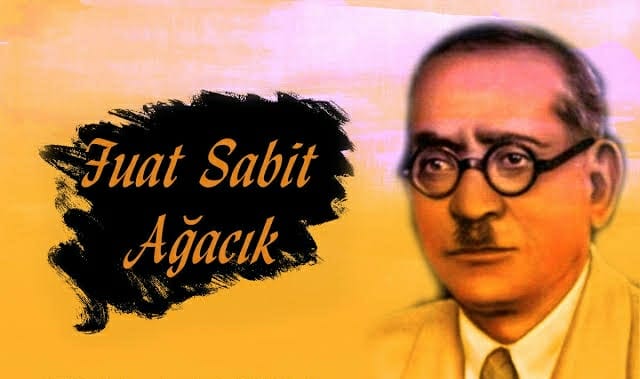Fuat Sabit AĞACIK
Fuat Sabit was one of the founders of Turkish Hearths and he was the father of name of Turkish Hearths’s. Aslo he was member of Ottoman Special Organization(Teşkilatı Mahsusa). He was born in Kemah district of Erzincan in 1887. His father is Mehmet Sabit, one of the officiers of Ottoman Public Debt Administration(Düyün-ı Umumiye). His real name is Ahmet Fuat, but Dr. It is known as Fuat Sabit.
He graduated from Military High School(İdadi) in 1905. Then he graduated Military Medical Academy in 1910 as a rank of doctor captain. After graduation, he worked in Gülhane Hospital care units for a while and gained application experience.
Then, in July 1912, he went to Erzurum as an officer at the Central Military Hospital. In 1914, he entered the Ottoman Special Organization(Teşkilatı Mahsusa) and started working on the facades with the aim of “getting news”. Due to this task, he traveled an important part of Eastern Anatolia and had the opportunity to get to know them. In particular, he made important contributions to the studies on acquiring information about Armenian terrorist acts in the East.
After the Erzurum Congress, which was held in 1919, he was sent to Baku as a representative to help the Bolsheviks help the National Struggle. Afterward he joined the Turkish Communist Party. He did successful diplomatic work in Baku, Dagestan and Moscow. On September 01, 1923, he was promoted to medical major.
After the National Struggle, he left political actions and returned to his professional jobs. He was appointed as a negotiator to Military Medicine Academy and taught German here. Then Fuat Sabit was sent to Manisa because it was thought that he took the side of the communists in a political event at school.
He left the army on April 31, 1927 because his mandatory mandate expired. He worked as a mobile doctor on between 12.01.1928 and 31.05.1929. Then he started dealing with the vineyards and fields he bought in the villages of Manisa.
Upon the start of the World War II, he returned to his profession and worked as a health officer. After this officer service in 1941 and 1944, he did not return to Manisa and settled in Istanbul. And by completing his specialty studies in medicine, he became a nerve diseases specialist.
He worked as a neurologist in the health department of Istanbul Municipality between 1944 and 1945. After serving in the Bakırköy Mental Hospital for a while, he returned to his job in the Municipality. He worked there from 1947 to December 1, 1951, and then retired. He spent his next life with his patients and friends at a nearby hospital and an office he opened in Beyoğlu. He passed away in Istanbul on April 15, 1957.
While he was a student of Military Medicine Academy, he made efforts to spread Turkishism idea in school with his friends who believed that he could get out of the depressed period of the Ottoman Empire with Turkishism.
In this way, he was thinking that it was necessary to organize in order to achieve success nationwide. Therefore, he pioneered the sending of a letter signed “190 Turkish Medical Students” and sent to the prominent highbrows of those years. For this reason, he chaired the meeting held on July 3, 1911. He suggested that the organization to be established be named “Turkish Hearths”.
He made very important contributions to the establishment preparations of the Hearth. He worked as a cofferer(veznedar) member in the first official delegation after his establishment on 25 March 1912.
However, his services in the establishment of the Turkish Hearths ended with his appointment to Erzurum in July 1912 and could not deal with the Turkish Hearths again.
However, these short but successful works made him one of the real founders of the Turkish Hearth. He also provided many useful services to Turkishness and country during the Armistice and Independence War periods. Only an article titled “From the Anatolian feelings” was published in the Turkish Dormitory Magazine(Türk Yurdu)((111. 4.1329) (1913), 111-115).
Dr. Fuat Sabit, who knows French and German very well and is known for his fondness for reading, didn’t have the opportunity to give enough works due to the stormy and active life he lived. Because there are very few his articles in newspapers and magazines; they are usually about health. His only published book, which is about health, is “Healthman Friedman and Calmette Tuberculosis Vaccines (1934)”.
Kuloğlu
Latest posts by Kuloğlu (see all)
- Muzaffer Sarısözen’in Hayatı - 1 Şubat 2021
- İmar Barışı Rezaleti: Suç Kimin? - 5 Kasım 2020
- The Life of Martyr Honorary Consul-General Orhan Gündüz - 1 Kasım 2020
- Kırım ve Edebiyat - 9 Eylül 2020
- Cengiz Dağcı ile Son Röportaj - 5 Eylül 2020
